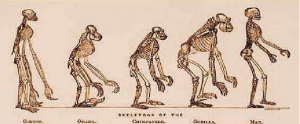Table of Contents
Introduction
Biodiversity refers to the diversity of living things on earth. Earth is home to around 8 million known species. Scientists and taxonomists brought many new ideas for the classification of these species. Some are similar in their body design but differ in other characteristics. Where do these millions of species come from? Time had a role to play. Over thousands and millions of years, different species evolved from one or more ancestors.
This is called evolution. Evolution took place and resulted in biodiversity.
Let’s learn more about classification and evolution.
Classification is generally defined as the method of distinguishing and arranging different types of living and fossil species into a hierarchical, multi-level classification.
Also, refer- Basis of Biological Classification

Classification and Evolution
According to Scientists’ estimations, there are about 8.7 million living species, which is still increasing. Among these, some are known, while some are unknown. For the ease of study and identification of these organisms, they have been classified into different groups based on different criteria. This procedure of arranging the organisms in a hierarchical series of groups is termed Biological classification.
There were different criteria to be followed in the arrangement of organisms into categories. Every classification started with a basic design, characteristics, similarities, dissimilarities, etc.
During the 18th century, most scientists had a wrong belief that both Earth and all the living organisms present on it had been created suddenly. The introduction of the modern taxonomy system by Carolus Linnaeus, it had changed all their thoughts and their view of evolution.

Evolution says that the life forms that exist today are better versions of early life forms. In 1859, ‘The Origin of Species’ a book by Charles Darwin mentioned the term evolution for the first time. According to Darwin’s contribution to the theory of evolution, the organisms which existed years ago had undergone certain changes for better survival and new life forms have arisen from them.
Evolutions have laid an elementary stone or pathway for classification. Even though evolution took place, when we classify organisms, some sort of species still have their ancestry body designs. They didn’t change completely. While another set of organisms developed a new advanced body design different from their ancestor. The former ones are called primitive or lower organisms and the latter group is called advanced or higher organisms. But these terms, do not justify the evolutionary differences. We can call primitive ones, ‘older organisms’ and advanced ones ‘young organisms’. Older organisms have simple body designs while young organisms have complex body designs. Thus, evolution has resulted from simple older organisms to complex young organisms.
To know more about evolution and its classification, visit BYJU’S

very useful for me
so much useful